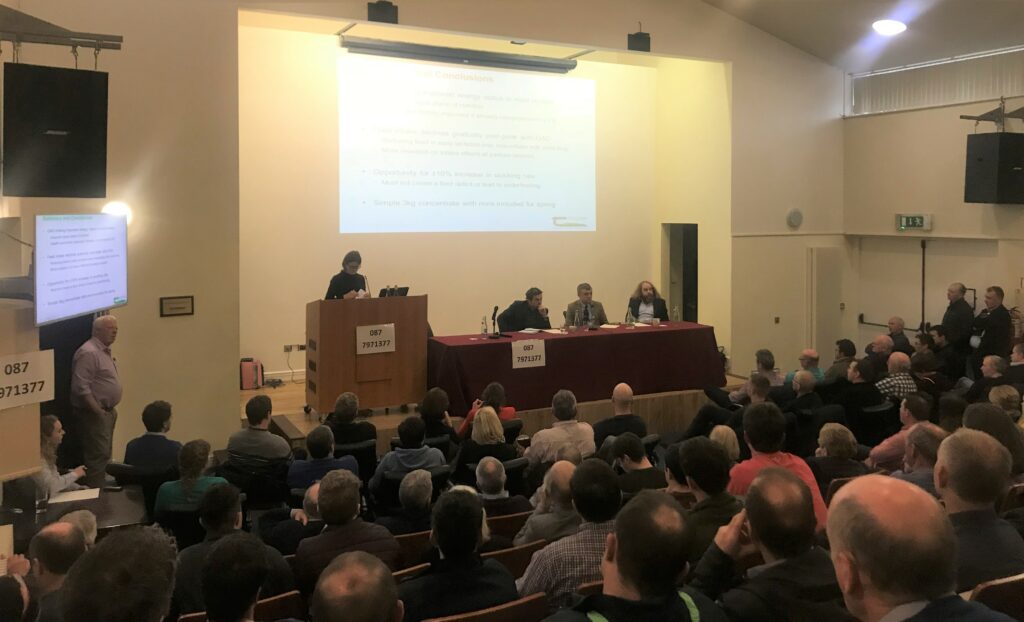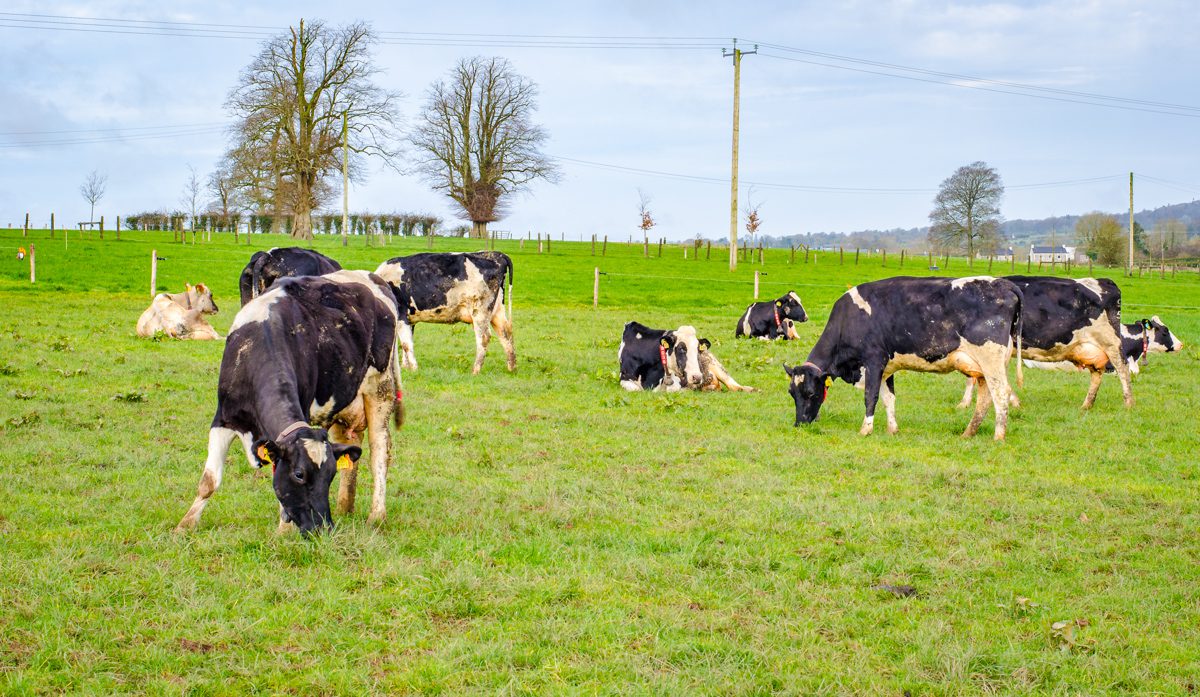There is mounting interest in once-a-day milking (OAD); this was quite evident from the large turnout to an event organised by Teagasc’s Brian Hilliard earlier this week.
Alongside a host of industry experts and farmers putting OAD milking into practice, Teagasc’s Joe Patton explained the plane of nutrition required by a OAD herd.
He said: “Broadly speaking, the dry matter intake (DMI) is pretty much similar between OAD and TAD herds for the first eight-to-10 weeks of lactation.
“Thereafter, differences start to emerge and – after peak milk yield – the difference comes to about 2kg of dry matter (DM)/cow/day in July, August and September and into the autumn.
“Where you have been planning for 18kg of DM/cow/day on TAD, you are looking at 16-16.5kg of DM/cow/day post peak on OAD. Before cows reach peak, intakes should be managed and similar to TAD herds,” Joe outlined.

Siobhan Kavanagh, Teagasc; Ed Payne, Hilltop Dairies; George Ramsbottom, Teagasc; Joe Patton, Teagasc
“There’s no point milking OAD to improve energy balance and then clipping intakes too much; you will lose the benefits.”
During his presentation, Joe highlighted research from Australia, New Zealand and France, stating: “To make a long story short here, don’t compromise milk yield any further by under-feeding.
“Don’t be under any illusion that if you are going to milk OAD, you can really trim back the level of nutrition; if you do that, you will not lose 20% in milk yield, it’s more likely that you will lose 35-40%.”
Stocking rate
Continuing, Joe said: “We don’t want to overstock the farm to compensate for milk loss and underfeed cows when doing so.
“Total intake between OAD and TAD herds comes to approximately 0.5t of DM/cow (500kg of DM/cow), which is the equivalent to about 10% of the intake for the year. So as a ball park figure, cows are going to eat 10% less.”
“In order to make this happen, grassland management has to be excellent to identify that 10% and really to make sure the whole system is run on pre-grazing yields and residuals.
“Typically, 2.4LU/ha translates to 2.6LU/ha on a OAD farm; that’s the scale of the difference we are taking about.
“If we can get 10% extra stocking rate, it will help to reduce some of the loss in yield on a per cow basis. But, if our extra stock leads to underfeeding and we lose more per cow than the 20-25% in yield, we are probably working against ourselves.
“Again, if we are in a situation that we end up assuming we can put on more cows and we end up purchasing forage, we are codding ourselves in this case as well.
So remember, if you go OAD, it’s a 10% change in demand and all we are doing with stocking rate is utilising that 10%.
“Variation in grass growth and variation in grass utilisation is the primary driver of stocking rate on farms and OAD will change that by approximately 10%, but we shouldn’t be going in with our eyes closed thinking just because we are milking OAD, we’re going to be able to stock the farm at 2.9-3.0LU/ha,” he concluded.
